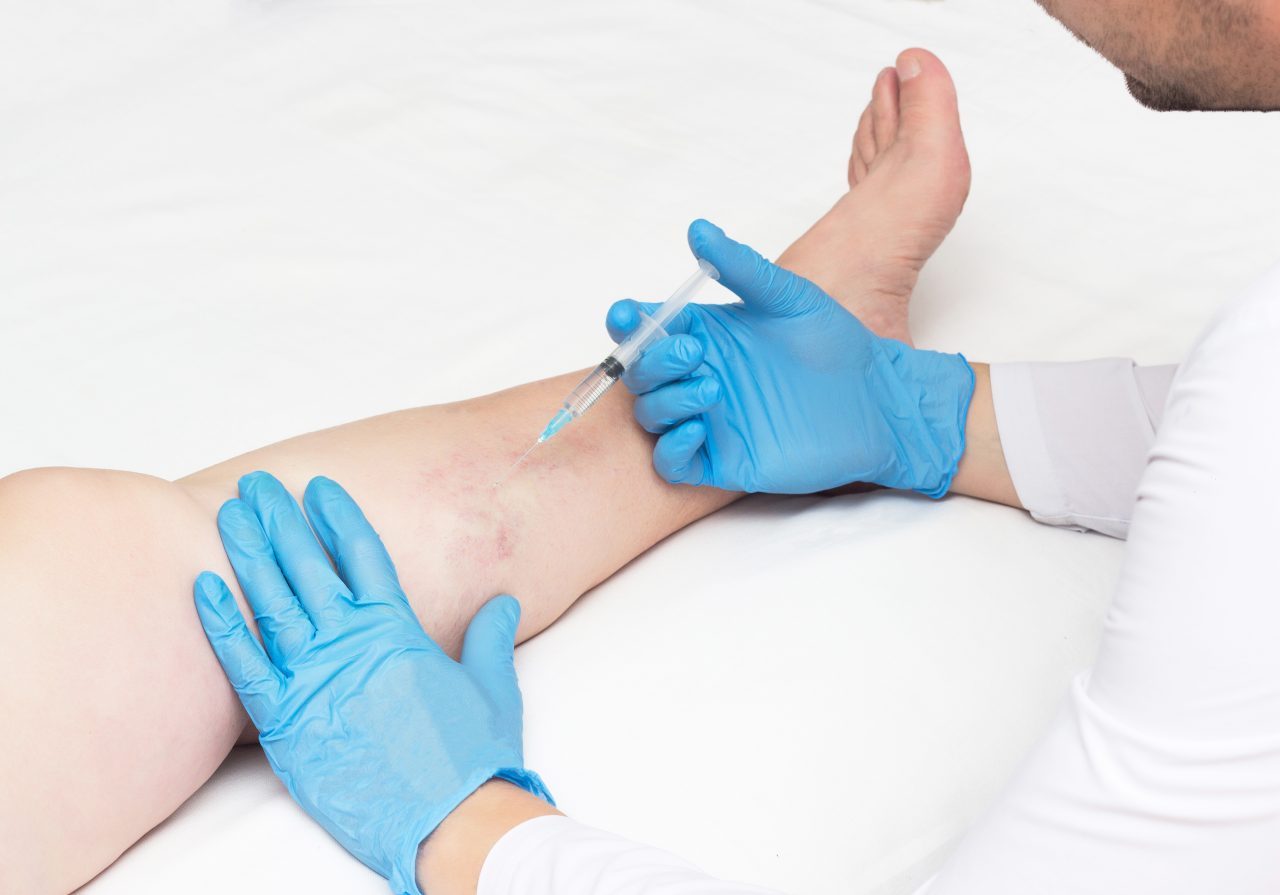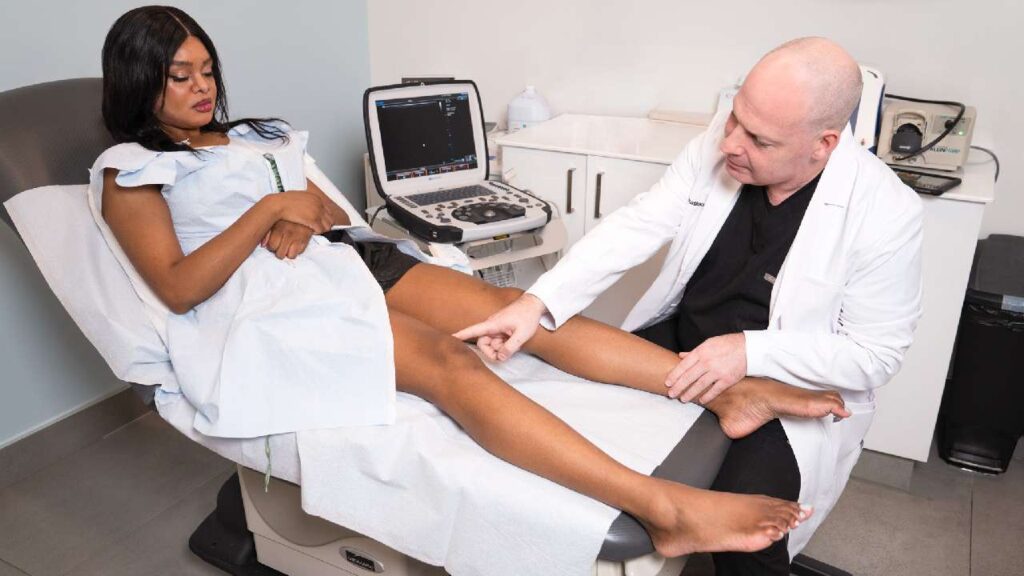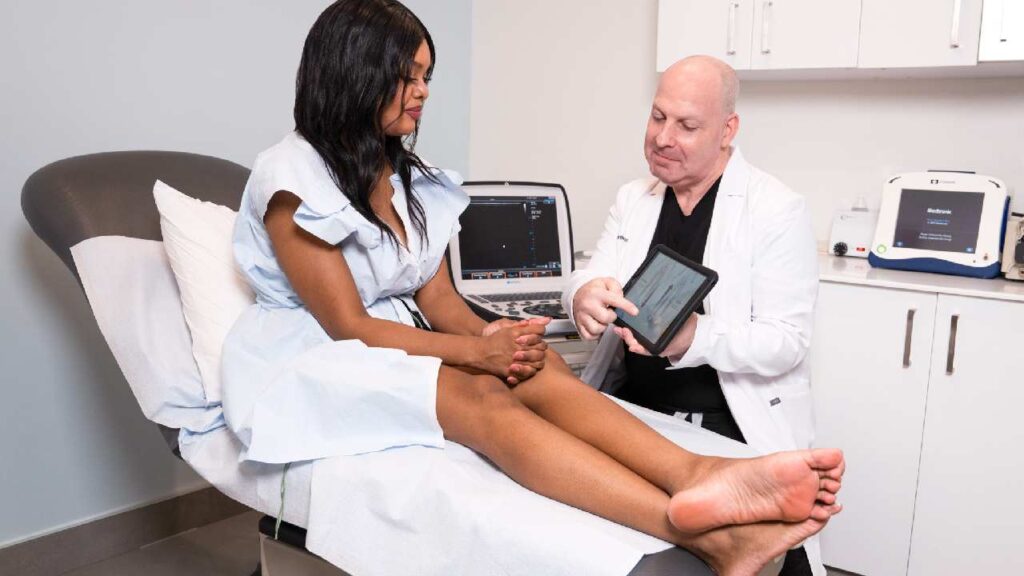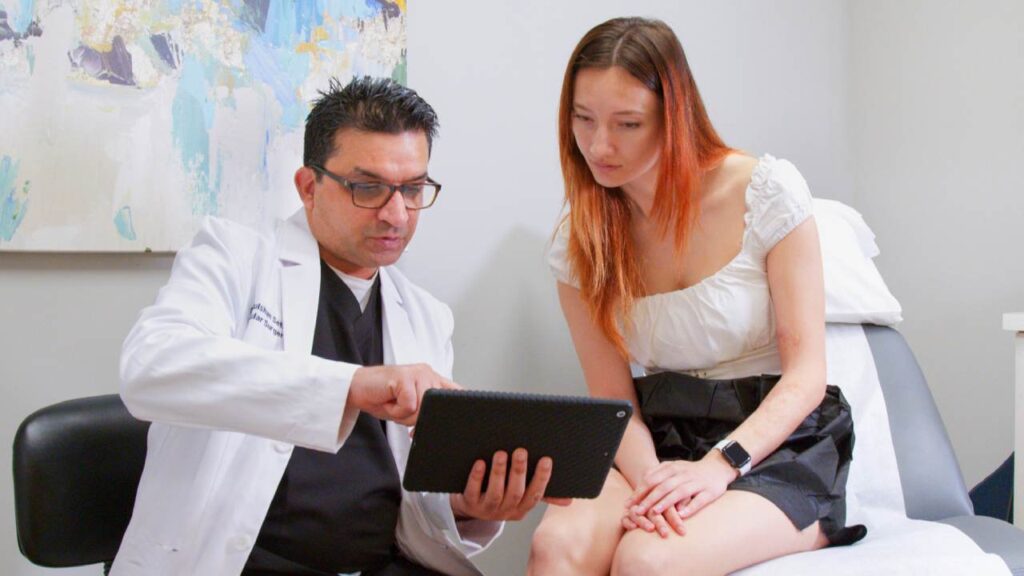How Do I Prevent Ropelike Bumps in Arm Veins and Leg Veins?
If you have a varicose vein, or you’ve seen one, you know they look like bumpy, tortuous, ropes beneath the skin. They are large, protuberant, and usually red, blue, purple, or green. If you don’t have a varicose vein, you might want to know how to stop varicose veins from developing. And if you do have one, you might want to know how to prevent it from getting worse, or how to prevent additional ones from forming.
There are some steps you can take to stop varicose veins from developing, like maintaining a healthy weight, staying active, and trying not to sit or stand for long periods of time. But varicose veins often develop for reasons we can’t control. These include a family history of them and broken valves in the veins. Varicosities are also more common with hormonal shifts, like pregnancy, menopause, and birth control usage. The best way to prevent them from forming or worsening is to book an appointment with a vein doctor who can treat the cause, as well as the existing damage.
Varicose veins appear at the surface of the skin. But valves in the veins beneath the surface are often to blame. When a valve fails, blood flows in reverse, elevating blood pressure in the vein. This causes the vein to become engorged and tortuous, which is the varicosity you can see. A vein doctor uses ultrasound technology to locate that faulty valve and treat it, along with the varicose vein. This prevents the varicose vein from worsening, and also prevents the faulty valve from creating new varicose veins or spider veins.

Does Vein Placement Impact Treatment?
The location of your varicose vein or spider vein has an impact on how you treat it, and also how you prevent more. A spider vein or broken capillary on the face might stem from vein disease, but it might also be the result of sun damage, illness, skin injury, or medication. A varicose vein or spider vein on the leg is more likely to be caused by broken valves in the veins, because leg veins withstand body weight and gravity while pumping blood up to the heart. Backward blood flow and blood pooling are more common in leg veins for this reason.
So, if you have a bulging leg vein, a vein doctor should examine you for valve failure in a deeper vein. Surface lasers that are used on facial veins won’t eliminate vale failure or larger varicose veins in the legs. These issues require an endovenous laser or another endovenous treatment like sclerotherapy, radiofrequency ablation, vein adhesives, or mechanochemical ablation.
How Do I Prevent Broken Capillaries in Feet?
Broken capillaries in the feet can signify Chronic Venous Insufficiency and broken valves. But they can also stem from an injury. If you break or sprain your foot, it’s common to see bruising and broken blood vessels. These will often heal themselves or fade over time. But if the damaged blood vessels stem from venous insufficiency, you need to treat the broken valves to restore efficient blood circulation. If the broken capillaries are caused by sun damage or aging, you’ll need a vein treatment for them to vanish.
How Do I Treat Veins Bulging on the Side of my Head?
If you notice veins bulging on the side of the head, it’s not always a medical issue. The skin on the forehead is thin, and the layer of fat beneath that skin is thinner than the layer in the arms, legs, and torso. So, if you take a hot shower, exercise, experience tension, or otherwise raise your blood pressure, you may see forehead veins protrude.
If the bulging veins are not twisted, boldly colored, or symptomatic, they might be healthy veins. If they reduce in size once the blood pressure lowers, there may be no cause for concern. Veins stretch and shrink throughout the day, based on our activities and surroundings. The signs that a vein has become varicose include that it’s larger, more twisted, and possibly more uncomfortable than other veins.
Which Specialist Treats Varicose Veins Plus Spider Veins?
Varicose veins and spider veins share certain causes. Vein disease and valve failure can cause both. But they also have different causes, and they are different sizes. So, treatment for one might not work for the other. If you have one type, you are more likely to develop the other. It’s best to avoid cosmetic vein clinics that only treat small spider veins. These might stem from a deeper issue, which those vein clinics can’t treat.
In addition, cosmetic vein clinics can’t treat varicose veins with non-invasive lasers. These require an endovenous approach. Choose a board certified, minimally invasive vein doctor for best results. These doctors can perform non-invasive and minimally invasive treatment for varicose veins and spider veins. And they avoid surgery whenever possible. Vein damage rarely requires surgery anymore, so opt for minimally invasive vein specialists.
Which Doctor Is Best for Varicose Veins on Black Skin?
Some patients worry that vein treatment will cause hyperpigmentation or hypopigmentation on their skin. Certain surface lasers might cause this, and there is a higher risk in patients with brown or black skin. However, there are several lasers to choose from and several alternatives to surface lasers.
Options include endovenous lasers, mechanochemical ablation, radiofrequency, sclerotherapy, and vein adhesives. These methods don’t cause hypopigmentation or hyperpigmentation because they don’t apply heat to the skin. They’re recommended by the National Heart Lung and Blood Institute for the treatment of varicose veins. A board certified vein doctor knows whether to use lasers and which ones to use. Choose a vein doctor over a cosmetic vein clinic to prevent skin discoloration.
Do Veins Always Vanish with Vein Clinic Treatments?
At qualified vein clinics, a treated vein shouldn’t return. Cosmetic vein clinics often use surface treatments that don’t penetrate enough to treat varicose veins. To avoid the frustration of failed treatments, choose a board certified vein doctor with ultrasound training. These doctors ensure the vein is closed by positioning treatment on the walls of the veins, rather than the skin.
Are Green Veins Good or Bad: What Requires a Vein Consult?
Some patients wonder whether their vein’s color indicates damage. Red, blue, purple, and green are all common vein colors. If your skin has blue undertones, your veins might look blue. Skin with yellow undertones will make veins appear greener. Red veins are typically spider veins or capillaries. If you’re concerned about the color of your veins, see a doctor. But the shape of the vein is more indicative of its health. A spindly cluster of veins might be a spider vein. A protuberant, twisted vein might be a varicose vein. Schedule a vein consult for clarification.
Where Can I Get My Varicose Veins Removed in NY?
The best place to treat varicose veins is a board certified vein doctor’s office. Choose an accredited facility with minimally invasive technology for the best outcome. These vein clinics avoid surgery if possible, so your vein will be treated in the body, rather than removed. Minimally invasive vein specialists provide quick, painless solutions that are covered by insurance.
What’s the Closest Varicose Veins Treatment Clinic Near Me?
The closest varicose veins treatment clinic in New York is either our Midtown office or our FiDi office. We also have three locations on Long Island. All of our vein clinics were named Centers of Excellence and are run by board certified vein doctors. Our vein doctors educate patients on ways to stop varicose veins from developing or worsening.





